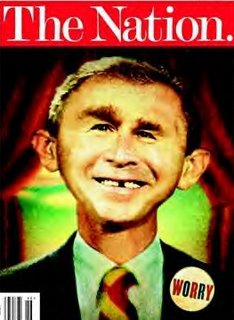Quid, Me Vexari?
 "Curbing the need to question" need not be interpreted as switching off one's curiosity, and especially not to be misinterpreted as remaining in passive, dumb acceptance of any words thrown our way. There are any number of psychological and emotional asanas to use to engage interactively with one's universe—a particularly notable one being "openness - to - experience".1 Boundaries may then expand, engage or merge with others — even dissolve. The experience of Self emerges from the mists of personality and the experience of self fades.
"Curbing the need to question" need not be interpreted as switching off one's curiosity, and especially not to be misinterpreted as remaining in passive, dumb acceptance of any words thrown our way. There are any number of psychological and emotional asanas to use to engage interactively with one's universe—a particularly notable one being "openness - to - experience".1 Boundaries may then expand, engage or merge with others — even dissolve. The experience of Self emerges from the mists of personality and the experience of self fades.The simulate self fears this fading, and so will bring fear to its defense, and questions are quashed.
Krishnamurti suggested that one enter a state he called "choiceless awareness", an aspect of openness.
Another aspect of authentic openness-to-experience is surrender—which is not an agreement to slavery. Rather, authentic surrender is a two-part process beginning with —
1. Putting down one's weapons (questions, statements, accusations);
2. Acquiescence.
It may be noticed that this process is one of assistance—which means that one is not alone in this process—because one is engaging with one's own Essence—which might be in the form of another manifested individuality— and which is also One's Creator Source. One might visualize this as an enormous, open hand gently reaching out in a gesture that clearly offers the opportunity for us to put our hand in it and join with it.
Upon acquiescence, the notion of duality cannot exist, fading under the focused light beam of conscious awareness—that is, the feeling—of the merging of Self with SELF. Merging is when two become something else (note that "else" is singular). Recall a previous post about the merging of two different atoms to create a molecule of entirely different and mysterious qualities.
The question, then, need not necessarily be "why?"—but perhaps, instead, "what?". A simple and interesting experiment is to re-ask a why? question using what? instead. 2
__________________________
1 Although the material at this wiki-link is an exceptional description, it attempts to identify openness to experience one of "the big five" "personality traits". Those who have read The Risen may understand, "personality" is the simulate self, which can, therefore, imitate authentic openness as a posture of display, for exploitation, and for further ego-mind stimulation. "Personality traits" are always a hit at parties. The wiki-article unknowingly reveals its simulate mind-driven origins in its baseline acceptance-belief in a theory—any theory—as supported by simulate self "scientific questioning"—i.e., "research". Like the world systems of the Diakka, our own worldly ego-mind systems place a great emphasis on personality as a powerful "force"—a concept which, in its duality-based systems assumes there is more than one "force". The difference between them is that the Diakka understand that personality is not real, although they still continue to manifest personality-driven environments from a stance of "real authority".
"Questioning authority" is a favourite activity of the simulate self, which desires conflict, and which needs two separate egos to achieve. However, keep in mind that the simulate self is always imitating the authentic Self's opening up through disarming and joining with SELF, which the ego interprets, in its insanity, as "questioning authority".
2 One hypothesis on the basic form of the question mark (?) is that it was developed in sixteenth-century England. Most typographic historians contend that the design for the question mark was derived from an abbreviation of the "qu" Latin words of why, what, where, how (quisnam, quidnam, qui quae que quod, quamobrem, quare, quatenus/quatinus, quemadmodum). At first this symbol consisted of a capital 'Q' atop a lowercase 'o'. Over time this early symbol simplified to the mark we use today. Another hypothesis suggests the question mark began to appear in the second half of the 8th century, when it resembled a lightning flash, striking from right to left, and following a period. Some interpret that this was meant to resemble the upward voice inflection used to indicate query.
To me, the question mark is a spiral, a path that begins anywhere in space and ends somewhere else in space, ended by the period blocking its movement. Ironically, this begs another question: what happens when the period is not placed, or removed?


2 Comments:
"what happens when the period is not placed, or removed?"
You get a glottal stop! :ʔ
Very interesting, that might be so!
Post a Comment
<< Home